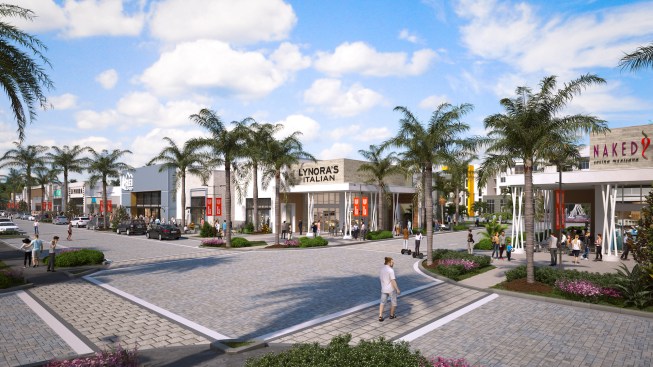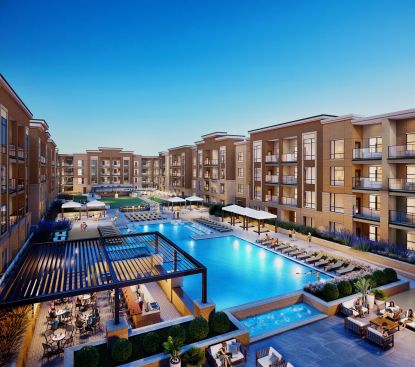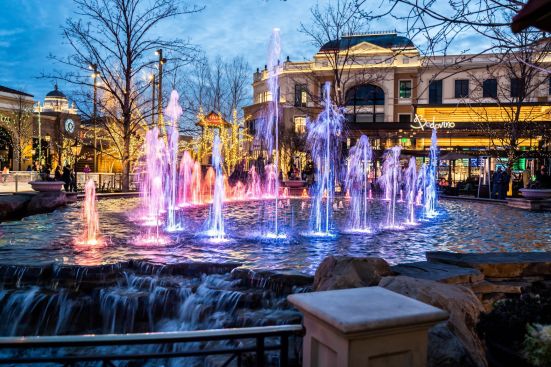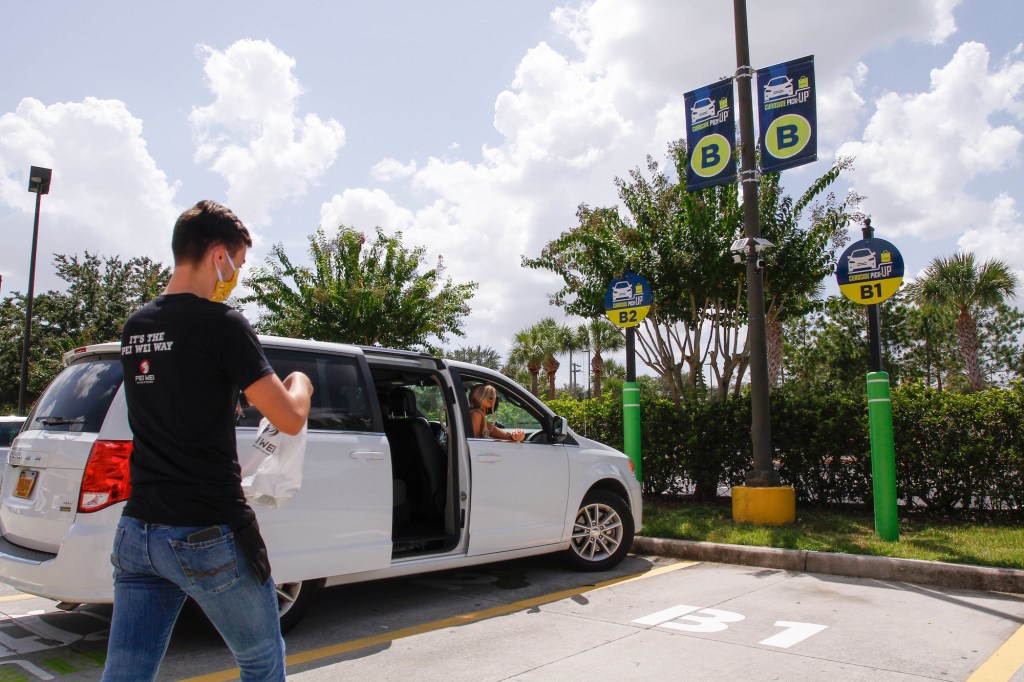Going into 2020, mixed-use development was quickly becoming the go-to model for multifamily and single-family residential communities alike.
Residents increasingly sought neighborhoods with a diverse mix of retail, restaurants, and office space that allowed them to live, work, and play in an area defined by minutes of walking, not highway miles. And developers were happy to meet that demand with more residential projects that also included shops, restaurants, fitness clubs, and working spaces just steps from residents’ doors.
Take Seattle as an example.
“The Seattle market has been great for mixed use, particularly smaller infill projects,” says Dr. John A. Kilpatrick, managing director of real estate consultancy Greenfield Advisors. “We coined the term ‘Seattle Special’ to describe communities with basement parking, first and second floor office or retail, and apartments or condos above. The market is littered with those.”
But now, with some of the hardest-hit asset classes from the COVID-19 pandemic including retail, restaurants, and office space, it’s putting strain on some of the core tenets—and tenants—of the mixed-use model. While residential residents, on balance, have continued to pay rent, commercial lessees have struggled to keep up with payments as business has been curtailed.
“One clear challenge has been the pandemic’s impact on sectors that make up a large portion of the mixed-use landscape, like retail,” says John Cetra, co-founding principal of New York-based design firm CetraRuddy. “Many owners now have to face the reality that these tenants can’t pay rent.”
Different Outcomes in Different Markets
How the impacts of COVID-19 have played out across the residential mixed-use world is as uneven as the pandemic itself, however, hitting multifamily, single-family, and affordable communities in different ways. Talk to some developers, and 2020 is a complete wash. Talk to others, and new opportunities have opened up as they’ve pivoted their projects to accommodate new demands and lifestyle choices.
“The impact has been, well, mixed,” says Ruth Todd, president at San Francisco-based architecture firm Page & Turnbull. She points to Twitter’s San Francisco headquarters, where offices have been dark, but the ground-floor marketplace is actually planning an expansion.
“The more likely scenario, however, is that the impact has been very harsh,” Todd says. “Some office and commercial tenants are essentially going out of business, and demand for parking and on-site amenities has softened.”
Struggling to Keep Spaces Leased
Just look at Lawrenceville, New Jersey-based affordable housing developer Community Investment Strategies, where president and CEO Christiana Foglio says the commercial side of her residential mixed-use projects have been hard hit.
“We have two mixed-use projects right now, and both of them have significant vacancies for commercial space,” Foglio says. “We’re adjusting our operating pro forma to assume that level of vacancy for at least another year.”
At a recently completed affordable mixed-use senior housing project in Galloway, New Jersey, she says interest in the retail portion of the project has really diminished, and she’s not anticipating new retail tenants coming in anytime soon. “Commercial financing is dead in the retail space,” she says.
In New York City, market watchers say the region hasn’t really recovered economically from the strict, three-month lockdown that was put in place at the beginning of the pandemic.
“No one is thinking about future development at the present time,” says Stuart M. Saft, partner and New York real estate practice group leader at law firm Holland & Knight. “The current focus is survival.”
Where Mixed Use Is Thriving
But head several hours south to Richmond, Virginia, and the outlook is completely different.
“We are not seeing a negative impact on mixed-use residential developments right now—at least in the projects we have handled in Virginia—stemming from COVID-19 or anything else,” says Robert Benaicha, partner at Richmond-based Hirschler Law, which advises developer clients. “In a nutshell, new mixed use is moving forward with no hesitation. None of the developments we are seeing are stalling.”
He also says that while commercial tenants often provide both rent and amenities for the communities where they’re located, many mixed-use developments are weighted more heavily toward rental income from apartment residents themselves.
“A lot of developers take advantage of multifamily financing options, which means they’re not leaning too heavily on their commercial rent,” Benaicha says. “The commercial rent in some cases only accounts for less than 10% of their income stream, so if those businesses start hurting, it’s a problem, but it’s not insurmountable.”

Courtesy Uptown Boca
For the Uptown Boca mixed-use development in Boca Raton, Florida, the pandemic has created delays and changes, such as a movie theater being scratched from the plans.
Moving Forward in Starts and Stops
In other places, some development has continued, while other portions of projects have been pulled back.
“In the South Florida and Tampa market that we’re in, we’re still bullish, especially on the multifamily side,” says Mike Taylor, CEO of Pompano Beach, Florida-based Current Builders, which is working on the Uptown Boca mixed-use development in Boca Raton that features 456 Class A luxury apartments and 171,806 square feet of retail space. “That has a huge retail portion to it, and what we’re hearing from the developers is some of the restaurants have been delayed, and they had a movie theater that got pulled off the table, but the fast food and carryout type of restaurants are still going forward.”
Owners Helping Commercial Tenants
For projects where commercial tenants have been struggling, owners and developers have been stepping up to help them weather the storm, in addition to pivoting to other uses for ground-floor retail space.
For example, at Jericho, New York-based real estate investment trust Kimco Realty, vice president of acquisitions and development Geoff Glazer says the firm has proactively been reaching out to its food and beverage and retail tenants to keep them in place, knowing that they’re a draw for the residents that anchor the rest of their mixed-use communities.
Glazer says Kimco has been expanding sidewalk seating areas, and even annexing parking lot space behind the appropriate barriers, to give food and beverage businesses more room for outdoor dining, as well as easier access for curbside pickup of to-go orders and more space for outdoor retail.
“If we’re flowing into the parking lot, we’ve been putting up appropriate barricades and planter boxes and working with those retailers to make sure that their furnishings and umbrellas and other things work within that area,” Glazer says.
The firm has also been helping those tenants with rental and leasing terms to try to keep them in place as long as possible.
“We’re working very hard to keep the small operators open and surviving through the other side of this pandemic,” Glazer says. “We’re putting plans in place for how to defer some of their obligations.”
But while Glazer emphasizes there have been challenges for some of his mixed-use tenants, especially restaurants and gyms, he also notes that even within his commercial tenant mix, the impacts of the pandemic have been varied.
“It’s been challenging for certainly the movie theaters, the fitness players, and some of the restaurants, those are probably the three areas that been hardest hit,” he says. “But some have been very successful, like the grocery store operators, drugstores, and banks. Having those everyday essentials is really important to complement the residential component.”
Blend and Extend on the Commercial Side, Too
Kimco isn’t alone in recognizing the importance of those aspects for their residents. Other developers are also actively working with their commercial tenants to give them relief for as long as they’re able to do so.
Kim Morque, president of Norwalk, Connecticut-based Spinnaker Real Estate, has been trying to keep current tenants where they are, even as the impacts of economic uncertainty from the pandemic work their way through the capital stack.
“The challenges of mixed-use projects relate to the ability of tenants to continue to pay rent, which directly impacts cash flow and the owner’s ability to pay its obligations such as mortgage, utilities, and building upkeep,” says Morque, who notes that residential rent collections have held up well enough to offset commercial tenants who have been more challenged and need more help.
“In some cases, it’s been a ‘blend and extend’ lease modification where rent has been reduced for a specific period and added on to an extended lease term,” Morque says. “Fortunately, none of our commercial tenants have closed, but we do have a few where we have suspended rent—tenants still pay utilities—since leasing the space during this time is unlikely.”
Mixed Use’s Built-In Diversification Model
Other developers stress that the more diversified nature of mixed-use developments, from a revenue perspective, has helped them generate cash flow to be able to subsidize commercial tenants, to a point.
“Fortunately, by nature mixed-use developments create a variety of different income streams from varied sources,” says Greg Lingo, president of Media, Pennsylvania-based Rockwell Development Group, which is spearheading the residential portion of the First State Crossing mixed-use development outside Philadelphia, which will include 620 townhomes and 576 apartments, 844,000 square feet for offices, 275,000 square feet for office-industrial, and 47,000 square feet for retail. “We have found in most of our mixed-use projects that as one sector is hit harder like office and small retail, the other parts of the project help pull the weight, like residential and grocery stores.”

Courtesy Hoefer Wysocki
Design firm Hoefer Wysocki has been working on large mixed-use developments, such as The Residences at the Galleria in Overland Park, Kansas.
Pivoting Ground Floor Retail into Health Care Space
Many owners and developers have been trying to pivot their existing retail space for other uses. Nowhere is that more apparent than in specialty health care. In the midst of a pandemic, it turns out, success in mixed-use development can hinge on appealing to residents’ sense of health and well-being.
Just look at the West Orange, New Jersey-based Atkins Cos., developers of residential, retail, and medical/office properties. President Bob Atkins says that having that diverse skill set has helped it adjust plans in the middle of the pandemic to repurpose dedicated retail for other uses.
For example, at the company’s Washington Square Town Center mixed-use community in Washington Township, New Jersey, Atkins had originally planned for 10,000 square feet of retail. But instead, it decided on the fly to convert that square footage into dedicated office space.
“In doing so, we were immediately able to sign a lease with a major women’s health provider for 70% of the building,” Atkins says. “I expect to see more of those types of conversions in the future.”
The reason why is because health care business models continue to shift away from hospital-centric inpatient facilities, and are instead looking to locate primary and specialty-care facilities within the local communities they serve.
“Mixed-use communities that might be home to hundreds, if not thousands, of residents, with a diverse range of health care and wellness needs are well suited to have a large on-site health care presence,” Atkins says.
For Chris Armer, vice president, multifamily at Kansas City, Missouri-based design firm Hoefer Wysocki, pivoting retail to that kind of health care space can work.
“Boutique health care is getting to be a bigger thing,” Armer says. “You’ll have a retail-oriented clinic or urgent care type space that’s not attached to any particular hospital.”
And with the demand for office space for information workers suddenly being in flux due to the pandemic, those types of health outlets, combined with the back-end operations needed to administer them, could serve as additional tenants for mixed-use operators.
“If you take that idea and stretch it even further, if you have 10,000 square feet for retail, that could be converted,” Armer says. “If you have a medical or health organization that might normally have a medical office building of their own, and there’s retail space available at your community where clientele is coming in off the street, it starts to make sense.”
Not Always an Easy Switch
And yet, while several developers interviewed for this article noted the relative ease with which specialty health care and wellness clinics can be substituted into retail space and tenant improvement projects, that’s not the situation for all use cases. “If it’s a vertically integrated, mixed-use property with residential over the top of retail, the ground level is largely just suited for boutique-type spaces,” Armer says. “You’re not going to just be able to slap a grocery store in there, because you’re talking about 15,000 or 20,000 square feet, and then you have to have parking, too. The lease depths on a lot of those projects are not really suited for a big retailer.”
With that being the case, some developers who have projects coming out of the ground now are actually trying to slow their projects down until they can get clarity for what will be in demand in the future, while others are taking it day by day.
“We have one developer who slow-played the start of the project, and now that they finally got it started, he’s trying to talk to the contractor about going month by month,” Armer says. “That’s not something contractors typically go for.”
Looking to the Outdoors for Relief
At Miami-based Related Group, executive vice president Jon Paul Pérez doesn’t mince words when describing the pandemic’s impacts on mixed use.
“This has absolutely been a challenge for mixed-use developments, especially those whose tenants rely primarily on enclosed spaces,” Pérez says.
Like other developers, Pérez stresses the importance of leveraging outdoor space as much as possible at communities today.
“Fortunately for us, many of our mixed-use properties have expansive outdoor areas for open-air dining and entertainment and are often anchored by grocers,” Pérez says. “For those properties with more limited outdoor options, we were able to work with local officials to find creative solutions.”
For example, in the Wynwood Business Improvement District in Miami, Pérez says Related worked with the local officials to widen certain sidewalks to allow for expanded outdoor seating, which gave some much-needed relief to food and beverage tenants.
“We are continuing to look for ways to navigate these unprecedented times,” he says.

Courtesy CenterCal Properties
CenterCal Properties continues to see customer interest in its open mixed-use projects, including The Village at Meridian in Meridian, Idaho.
Outdoors + Wellness in Mixed Use
Others say the emphasis on wellness and making use of outdoor space is here to stay for mixed use, even post-pandemic.
“Incorporating functional outdoor space has never been more important,” says Becky Zimmermann, president at Raleigh, North Carolina-based landscape architecture firm Design Workshop. “For our mixed-use projects we are designing outdoor space with maximum flexibility that will enable users to adapt for outdoor dining, outdoor workouts, and outdoor retail. An event lawn can host everything from socially distanced yoga to watercolor painting classes. Reaction to the pandemic has taught us that outdoor spaces are crucial to provide opportunity for human interaction.”
Indeed, a renewed focus on the outdoors is top of mind for many developers, and can even help draw traffic for commercial tenants who need all the support they can get right now.
“There is a new appreciation for the benefits of attractive open spaces, place-making, and a varied offering of goods, services, and amenities that complement the residential and office uses,” says Fred Bruning, chairman of El Segundo, California-based CenterCal Properties. “In many cases, our customers and guests have continued to come to our projects to enjoy our parks and open spaces, while shopping at our supermarkets and other essential tenants.”
‘Almost COVID Proof’
Developers are also doing everything they can to use touchless technology, and keep sanitation and hygiene top of mind, immediately and post-pandemic at mixed-use projects.
“While designing mixed-use projects, we have also adapted to the current situation by implementing features that help mitigate contagion into our designs,” says Kobi Karp, principal at Miami-based Kobi Karp Architecture & Interior Design. “We have added features like UV lights in the HVAC systems, added more touchless features, like automatic doors, and biometric security locks that open via retina scanners and voice-activated elevators, along with much more open-air restaurant seating.”
And, hinging on the mixed “use” aspect of mixed use, operators are also rethinking design elements to keep all tenants safe.
“Any real estate product that has shared circulation and interiors with multiple points of common areas, these are really challenging to develop and market right now,” says Christopher Alt at Phoenix design firm Studio Ma. “People are very aware of the dangers of being in environments with so much shared space.”
Alt says his firm avoids double-loaded corridors in its designs, and strives to include outdoor space for all tenants. “It’s almost COVID proof,” he says.
While mixed-use development has been hit by the pandemic along with all facets of real estate and business in 2020, by strategically thinking about how to pivot uses, support commercial tenants who need it, and use outdoor space creatively, developers, designers, and owners are doing what they can to make it through the challenges brought on by COVID-19.
